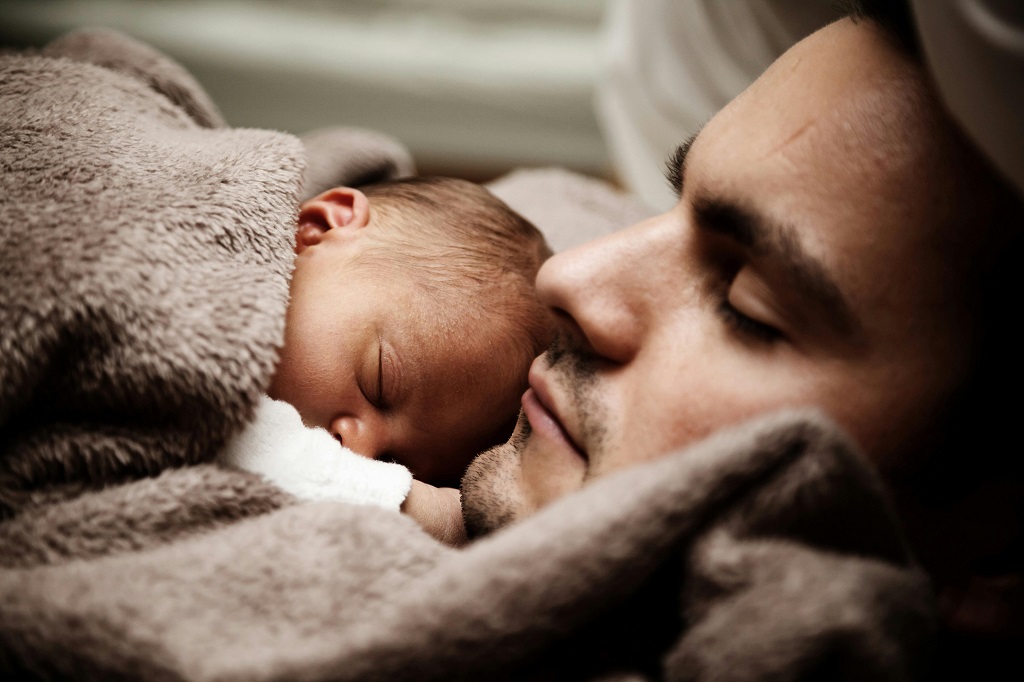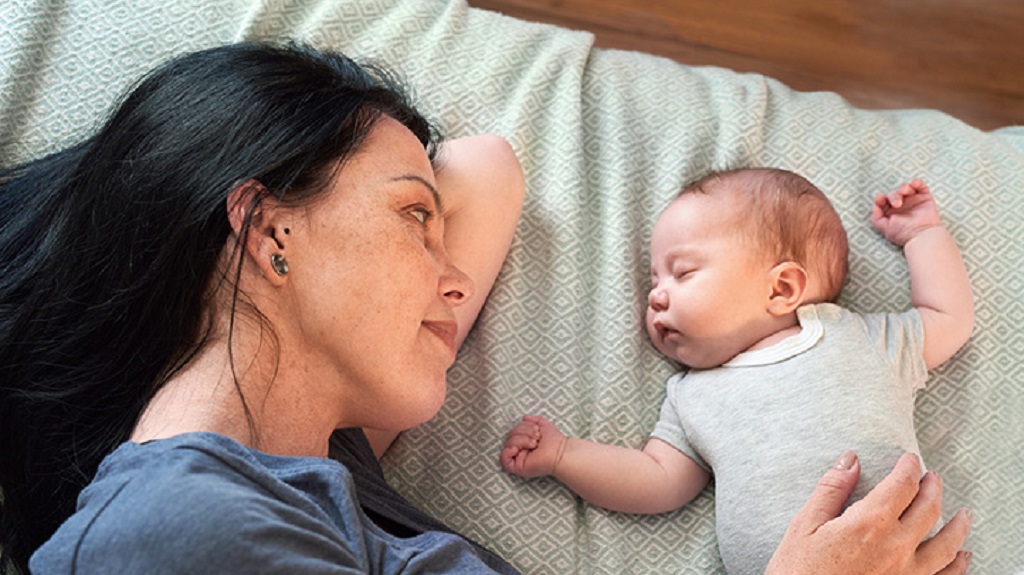Help baby sleep independently by establishing a consistent bedtime routine and creating a calm sleep environment. A proper sleep routine and a soothing sleep environment can greatly contribute to a baby’s ability to sleep independently.
As a parent, finding ways to help your baby sleep through the night can be challenging but with the right strategies and consistency, you can make a difference. We will explore various tips and techniques that can aid in promoting independent sleep for your baby.
By implementing these suggestions from the Pro Baby Guide, you can set the foundation for healthy sleep habits that will benefit both you and your little one in the long run. Let’s delve into some effective methods recommended by Pro Baby Guide to help your baby sleep more independently. These strategies are designed to support your baby’s journey towards achieving restful and uninterrupted sleep, ensuring a positive impact on their overall development and well-being.
Establishing A Bedtime Routine
Aim for bedtime around the same time every night.
Include soothing activities like reading or gentle music.
Setting The Sleep Environment
- Use a firm mattress in a crib or bassinet.
- Ensure bedding is lightweight and fits snugly.
- Position soft toys away from the sleeping area.
- Keep the room temperature comfortable.
- Avoid loud noises during sleep time.
- Use curtains or blinds to control light exposure.
- White noise machines can drown out disturbances.
Introducing Self-soothing Techniques
Introducing Self-Soothing Techniques is a crucial step in helping your baby sleep independently. By introducing these calming methods, you can help your little one develop the skills they need to soothe themselves to sleep, promoting better sleep habits and reducing dependency on parental intervention.
Gradual Parental Withdrawal Method
The gradual parental withdrawal method involves slowly reducing the level of parental intervention at sleep time, allowing the baby to learn to settle themselves to sleep independently. It typically starts with parents offering reassurance and comfort while the baby is settling, perhaps by gently rocking them in a rocking baby chair, and then gradually reducing the level of presence as the baby becomes more accustomed to falling asleep alone. This approach can help ease the transition for the baby, as the soothing motions of the rocking baby chair can mimic the comfort of being held, making it easier for them to adapt to sleeping independently.
Using Transitional Objects
Transitional objects, such as a favorite blanket or soft toy, can provide comfort and familiarity for a baby when transitioning to sleep. These objects act as a source of security and comfort, allowing the baby to self-soothe by cuddling or holding the item while settling to sleep.
Dealing With Sleep Regressions
When it comes to helping your baby sleep independently, one of the challenges you may face is sleep regressions. Sleep regressions are periods of disrupted sleep that can occur at various stages of your baby’s development, causing frustration and exhaustion for both you and your little one. Understanding the causes behind these regressions and adapting the sleep routine accordingly can greatly help in managing and overcoming this temporary setback.
Understanding The Causes
Sleep regressions can be triggered by various factors, such as growth spurts, developmental milestones, teething, illness, or changes in the environment. These factors can disrupt your baby’s sleep patterns and make it challenging for them to settle into a consistent sleeping routine. It’s important to recognize that sleep regressions are normal and temporary, lasting for a few days or weeks.
Adapting The Sleep Routine
During sleep regressions, it is essential to be flexible and adapt your baby’s sleep routine to meet their changing needs. Here are some strategies to help you navigate through this phase:
- Maintain consistent bedtime: Stick to a regular bedtime to establish a sense of routine and familiarity.
- Offer comfort: Provide extra comfort and reassurance to your baby during this challenging time.
- Create a soothing environment: Ensure the sleep environment is calm, dark, and quiet to promote restful sleep.
- Implement a wind-down routine: Help your baby unwind before bedtime with a calming routine, including activities such as bath time, gentle massages, or reading a bedtime story.
- Encourage self-soothing: Gentle techniques like rocking, patting, or using a pacifier can help your baby learn to self-soothe and fall back to sleep independently.
- Promote daytime sleep: Adequate naps during the day can reduce overtiredness and improve nighttime sleep. Ensure your baby has a quiet and comfortable space for daytime naps.
Beyond these strategies, it’s important to remember that every baby is different, and it may take some time to find the right approach that works for your little one. Patience, consistency, and adaptability will be key in helping your baby navigate through sleep regressions and develop healthy sleep habits that promote independent sleep.
Addressing Sleep Training Methods
When it comes to helping your baby sleep independently, addressing sleep training methods is an important topic to explore. Every parent wants their baby to develop healthy sleep habits and be able to soothe themselves to sleep.
Ferber Method
The Ferber Method, also known as progressive waiting or graduated extinction, is a sleep training method that involves gradually increasing the amount of time you leave your baby to self-soothe before intervening. This method helps babies learn how to fall asleep on their own.
In the Ferber Method, you put your baby to bed while they are still awake, but drowsy. You then leave the room and wait for a predetermined amount of time before checking on your baby. The intervals between checks increase gradually, allowing your baby to practice falling back to sleep independently. This method requires consistency and patience, as it may involve some tears.
Cry It Out Method
The cry-it-out method, also known as extinction, involves allowing your baby to cry without any intervention from you. This method emphasizes letting your baby learn to self-soothe and fall asleep on their own without any external comfort or assistance.
In the Cry It Out method, you put your baby to bed awake, say goodnight, and leave the room. If your baby cries, you don’t go in to soothe them. This method can be challenging for parents, as it can be difficult to hear their baby cry without intervening. However, many find that their baby learns to fall asleep independently within a few nights.
No Tears Method
The No Tears Method, also known as gentle sleep training, is an approach that aims to minimize crying and distress for both babies and parents. This method focuses on gradually helping your baby develop independent sleep habits while offering comfort and support.
In the No Tears Method, you establish a consistent bedtime routine and put your baby to bed while they are still awake. You then stay with your baby and provide gentle reassurance, such as patting or singing, until they fall asleep. Over time, you gradually reduce your involvement, allowing your baby to feel more comfortable falling asleep on their own.
| Method | Approach | Effectiveness | Considerations |
| Ferber Method | Progressive waiting | Effective for teaching self-soothing | Requires consistency and patience |
| Cry It Out Method | Letting baby self-soothe | Can be challenging for parents | May involve some tears |
| No Tears Method | Gradual support and comfort | Minimizes crying and distress | Requires longer time to see results |
When it comes to choosing a sleep training method, it’s essential to consider your baby’s temperament, your comfort level with crying, and your parenting philosophy. What works for one family may not work for another, so it’s important to find an approach that feels right for you.
Frequently Asked Questions On How To Help Baby Sleep Independently
How Can I Teach My Baby To Sleep Independently?
Teach your baby to sleep independently by establishing a consistent bedtime routine, creating a soothing sleep environment, and gradually reducing sleep associations like rocking or feeding. Encourage self-soothing techniques, such as using a pacifier or a lovey, to help your baby learn to fall asleep on their own.
At What Age Can I Start Teaching My Baby To Sleep Independently?
You can start teaching your baby to sleep independently around 4 to 6 months of age when their circadian rhythm begins to develop. However, consult with your pediatrician as every baby is different and may have unique sleep needs.
Is It Too Late To Teach My Baby To Sleep Independently?
It is never too late to teach your baby to sleep independently. Although it may require more time and consistency, implementing sleep training methods can help your baby develop healthy sleep habits and improve their ability to self-soothe. Gradually introduce changes to their sleep routine and be patient with the process.
Conclusion
Helping your baby sleep independently is a gradual process that requires patience and consistency. By following the tips and techniques mentioned in this blog post, Explore How much does a premature baby grow?
you can create a peaceful and comfortable sleep environment for your baby. With time and persistence, you can empower your baby to develop healthy sleep habits and improve their overall well-being.



